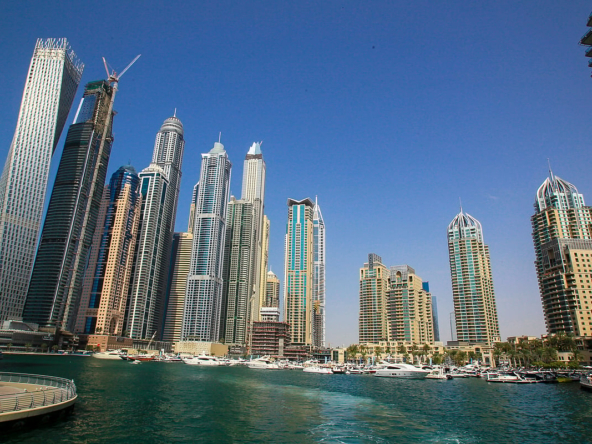More than 100,000 sqm of new offices will be handed over, with pre-leasing activities further limiting ready supply
Dubai’s real estate market continues to experience robust growth, particularly in the office sector, where demand from both existing and new occupiers remains exceptionally strong. However, a persistent shortage of high-quality office spaces in prime free zones and central areas is exerting significant pressure on rental rates, leading to increased rental growth and occupancy levels.
According to CBRE Middle East’s latest UAE Real Estate Market Review, as of March 2025, average occupancy rates across Dubai’s office assets reached approximately 94%, up from 90% in 2023. This upward trend is expected to continue due to limited new supply and sustained demand.
Office rents in Dubai have also been on an upward trajectory, with average leasing rates increasing by more than 20% year-on-year. Many occupiers are now facing significant rent hikes upon lease renewals, as landlords remain optimistic given the scarcity of available accommodations.
CBRE Middle East notes that supply constraints are evident across most prime and secondary office locations in Dubai, a situation unlikely to be resolved until at least 2027, considering the current pipeline of completions and the volume of latent demand.
Anticipated office deliveries in 2025 include properties at Dubai CommerCity and TECOM. However, with more than 100,000 sqm of new accommodations expected, pre-leasing activities are likely to result in minimal, if any, space being available for lease upon completion.
“Undersupply remains a key challenge for the UAE market across all real estate sectors, as reflected in the continuation of rental growth and rising occupancy rates. This has also continued to support strong price growth, with higher sales values recorded across the residential markets in Dubai and Abu Dhabi. Despite some macroeconomic uncertainty from recent tariff and trade tensions, the outlook for the UAE remains very bright, supported by an increasingly diversified non-oil sector and a diverse set of global trading partners,” stated Matthew Green, Head of Research MENA.
In Abu Dhabi, the office market is thriving, fueled by a robust non-oil sector and government investments that have stimulated demand for commercial spaces. Average occupancy rates have reached 96%, with office rental rates increasing by approximately 13% year-on-year, while prime rents have risen nearly 15%. Lease renewals have also grown by 9%, although new leases have declined due to limited availability.
Residential Rent Rates Rise
Turning to Dubai’s residential real estate market, the first quarter of 2025 showcased robust growth, with rental rates and sales values rising compared to the previous year. An active development pipeline, particularly in waterfront areas and affordable communities, has contributed to this growth, with over 25,000 new units launched.
Despite the increase in launches, slower project deliveries have led to higher rental rates, averaging nearly 11% for apartments and 9% for villas. Transactional property values have also risen by over 16%, reflecting consistent quarter-on-quarter increases. While rental growth has moderated from earlier highs, it remains a pressing concern for residents facing rising living costs.
Dubai’s Residential Transaction Volumes Surge 23%
In Q1, Dubai’s residential real estate transaction volumes surged by 23% year-on-year, with off-plan transactions increasing by 33% and ready properties up nearly 5%. The total of 43,000 transactions recorded marks one of the highest figures ever, excluding Q3 and Q4 of 2024.
The total sales value reached AED115 billion, with off-plan transactions accounting for AED79 billion (69%) and ready properties for AED36 billion (31%). Overall transaction values have risen by 29% year-on-year, with off-plan values increasing by nearly 35% and ready values by almost 19%.
For the Abu Dhabi residential market, price levels have continued to rise with momentum remaining despite a slowdown in registered off-plan sales. However, there was a 10% increase in the number of ready residential unit transactions, underlining the growing demand from end-users and yield-focused investors.




